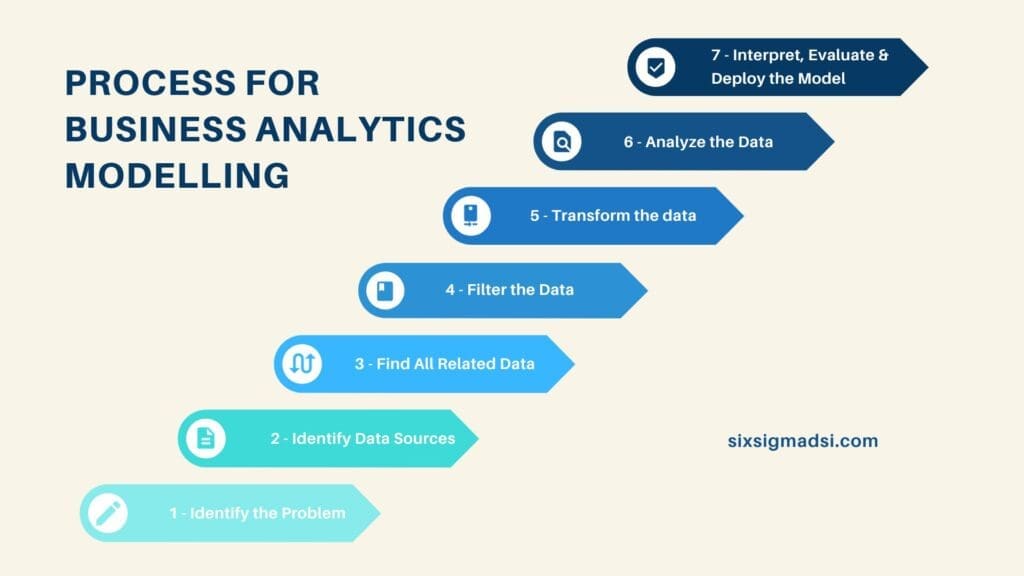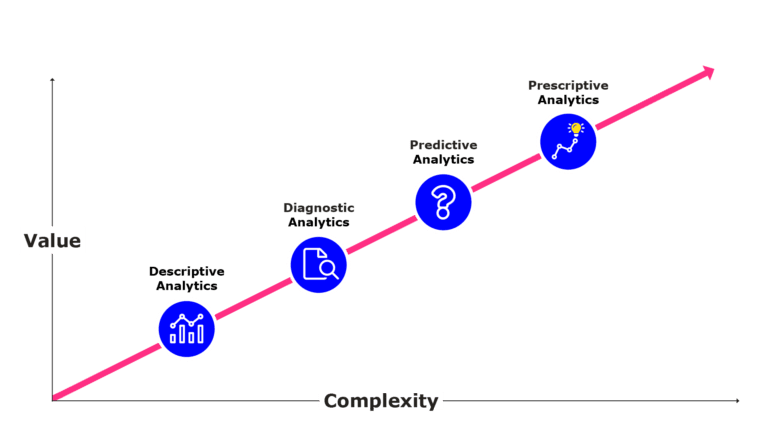Table of contents
What Is Analytics Modelling?
Analytical modeling, also known as analytics modeling, is a method used in data analysis and decision-making processes to gain insights, make predictions, and inform business strategies. It involves the use of mathematical and statistical models to understand and interpret data, identify patterns, and predict future outcomes based on historical data and known variables.
Analytics modeling involves a mathematical approach to business analysis, incorporating intricate calculations that often encompass a multitude of variables and factors. When wielded with appropriate technique and diligence, this analytical approach can yield considerable power when seeking resolutions to specific issues.
Not everything in the realm of business can be precisely quantified, but the majority of it can indeed be subjected to quantification. While understanding the intricate interplay of variables and forces that influence a particular outcome might initially appear daunting, it is not an insurmountable task. Analytical modeling stands as a potent and dependable method for transforming the intricate web of elements and circumstances into actionable insights to inform decision-making.
Another perspective on analytical modeling defines it as predominantly quantitative or computational in nature, presenting the system through a series of mathematical equations detailing parametric relationships and their associated parameter values in relation to time, space, and other system parameters.
Key Aspects Analytical Modeling
- Data Analysis: Analytical modeling begins with the collection and analysis of data. This data can come from various sources, such as customer transactions, market trends, or operational metrics.
- Mathematical Models: Analytical modeling relies on mathematical equations, statistical algorithms, and computational techniques to represent the relationships between different variables and factors. These models are designed to capture the behavior of the system under study.
- Predictive Capabilities: One of the primary purposes of analytical modeling is to make predictions. By analyzing historical data and applying mathematical models, organizations can make informed forecasts about future events or outcomes. This can be used for demand forecasting, risk assessment, and more.
- Optimization: Analytical modeling can also be used to optimize processes and make better decisions. For example, it can help businesses determine the most cost-effective way to allocate resources or set prices for products and services.
- Simulation: Some analytical models support simulation, allowing organizations to experiment with various scenarios and assess the potential impact of different decisions before implementing them in the real world.
- Data-Driven Decision Making: Analytical modeling promotes data-driven decision-making. It enables organizations to base their strategies and actions on empirical evidence and quantitative analysis rather than intuition or guesswork.
- Continuous Improvement: Analytical models are often updated and refined as new data becomes available. This iterative process helps organizations adapt to changing conditions and improve the accuracy of their predictions.
Data analytics and modeling are widely used in various fields, including finance, marketing, operations research, healthcare, and many others. It helps organizations gain a deeper understanding of their data, improve their decision-making processes, and ultimately achieve better outcomes.

Three Key Advantages of Data Analytics and Modeling:
- Informed Decision-Making:
The main advantage of harnessing analytical modeling is the assurance of making data-driven decisions. Leaders are not left to rely on intuition but can instead employ analytics to accurately define problems, formulate solutions, and anticipate outcomes.
2. Logical Information Structuring:
At the heart of analytical modeling lies the rational organization and structuring of information. This means that results can be used to trace general outcomes back to specific sources.
3. Collaborative and Iterative:
The objective nature of analytical modeling renders it an ideal tool for establishing a shared foundation for discussion among a diverse group. Instead of attempting to reconcile subjective theories, analytical data provides a universal reference framework within an organization.
Significance of Understanding Analytical Modeling:
Just like any other business tool, a solid understanding of analytical modeling is crucial to discern its capabilities and limitations. Despite its potential and utility in capable hands, it is not a guaranteed solution for all issues.
Key Points to Keep in Mind:
- Interpretation of Information: The value of information hinges on its interpretation. Decisions of consequence should always be founded on a thorough evaluation of the data’s factors and implications.
- Data Quality: The usefulness of analytical modeling relies heavily on the quality of data. Garbage in, garbage out – poor data input results in subpar outputs. Therefore, the techniques for collecting data must be as robust as the modeling itself.
- Diverse Applications and Approaches: Analytical modeling often centers around specific problems or questions, and various models are available for different situations. Selecting the most appropriate model for each unique scenario is crucial.
Types of Analytics Modelling
Analytics encompasses four distinct pillars in the modern analytical model: descriptive, diagnostic, predictive, and prescriptive. These pillars work in tandem to unlock valuable insights from data and drive business objectives. They build upon one another, with increasing complexity and resource requirements matched by greater insight and value.
- Descriptive Analysis: This foundational type of analysis answers the question, “What happened?” It involves summarizing historical data, often presented in the form of dashboards. Businesses use descriptive analysis to track Key Performance Indicators (KPIs), which gauge performance against established benchmarks. Examples include KPI dashboards, monthly revenue reports, and sales lead overviews.
- Diagnostic Analysis: After understanding “what happened,” the next step is to explore “why it happened.” Diagnostic analysis delves deeper to uncover the causes behind observed outcomes. It leverages insights from descriptive analytics to identify patterns and connections in the data. This type of analysis focuses on creating detailed information, making it useful for addressing emerging problems without redundant data collection. Examples include investigating slow shipments in a specific region for a freight company and determining which marketing activities boost trials for a SaaS company.
- Predictive Analysis: Predictive analysis aims to answer “what is likely to happen” by using historical data to make informed forecasts about future outcomes. It builds on descriptive and diagnostic analyses and relies on statistical modeling, which demands additional technology and expertise for accurate predictions. While descriptive and diagnostic analyses are common in business, predictive analysis often poses challenges due to resource and expertise requirements. Examples of predictive analysis applications include risk assessment, sales forecasting, customer segmentation for lead conversion, and predictive analytics in customer success teams.
- Prescriptive Analysis: The most advanced type of data analysis, prescriptive analysis combines insights from all previous analyses to recommend the best course of action in current decisions or problems. It requires cutting-edge technology and significant organizational commitment. Prescriptive analysis is exemplified by Artificial Intelligence (AI), where AI systems use vast datasets to make informed decisions and can even execute actions. While large data-driven companies like Apple and Facebook use prescriptive analytics and AI, many organizations may find the transition challenging. However, as technology advances and more professionals become skilled in data analysis, the adoption of data-driven practices is expected to grow.
In summary, these four types of data analysis are interconnected and build upon each other to provide various insights. Advancing from descriptive to predictive and prescriptive analysis necessitates greater technical capabilities but offers deeper insights for organizations.

An Industry Example of Data Analytics Modelling
Consider a barbecue restaurant that caters to customers from lunch through dinner every day of the week. Management aims to maximize overall profit by minimizing waste and missed sales opportunities. As they prepare meat days in advance, any surplus goes to waste. To address this challenge, the restaurant enlists the services of external contractors to develop a predictive analytics model.
The modelers scrutinize several pertinent factors, including historical customer attendance in previous weeks, weather forecasts, and the special promotions or events of nearby restaurants. They construct an initial model and continuously compare actual results with predictions until they achieve a commendable 90 percent accuracy, effectively meeting the restaurant’s objectives.
Have you used data analytics modeling in your business?
We’d love to hear your insights, challenges, and success stories. Share your thoughts in the comments below and let’s spark a conversation about the power of analytical models in the business world!












